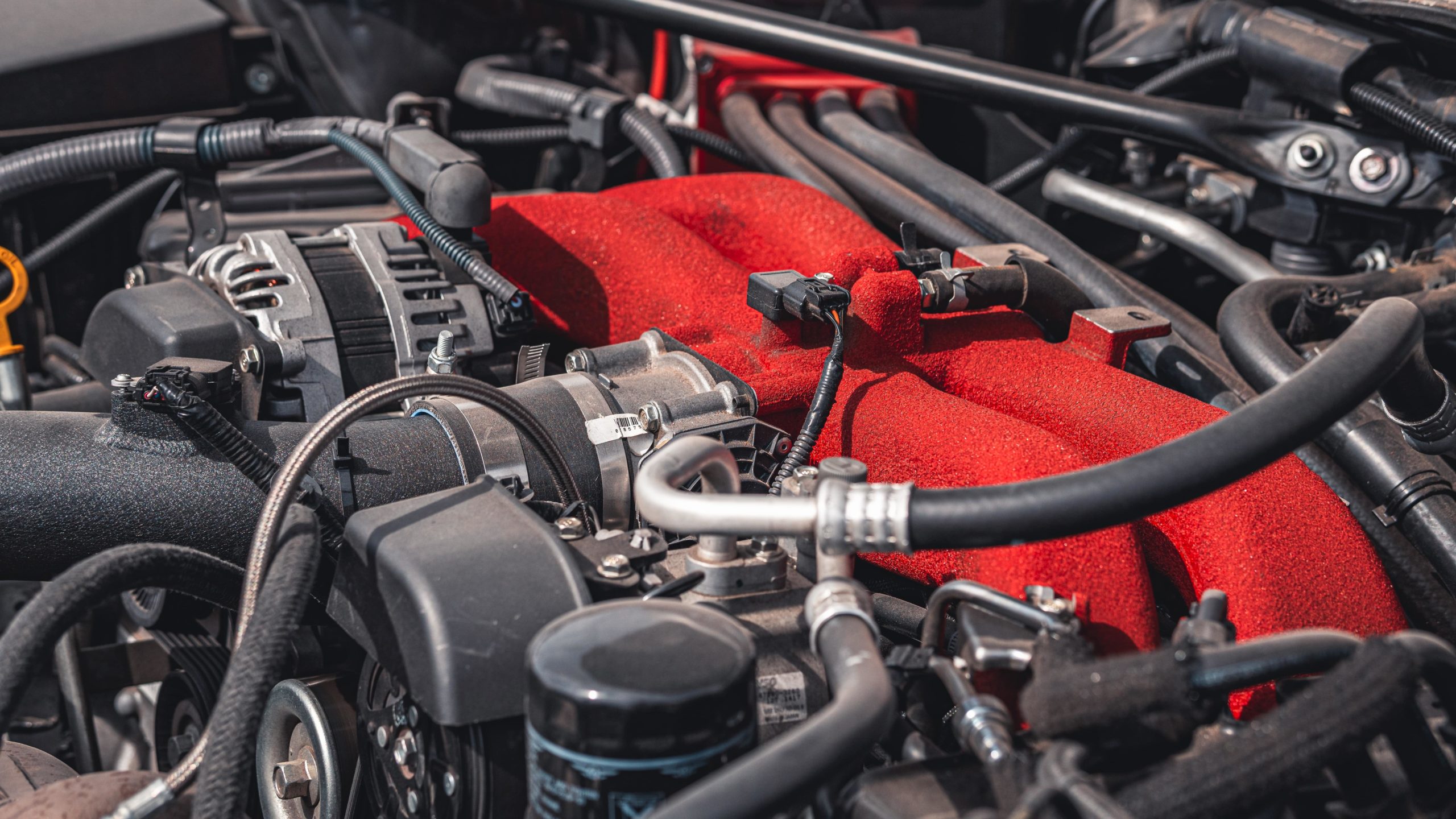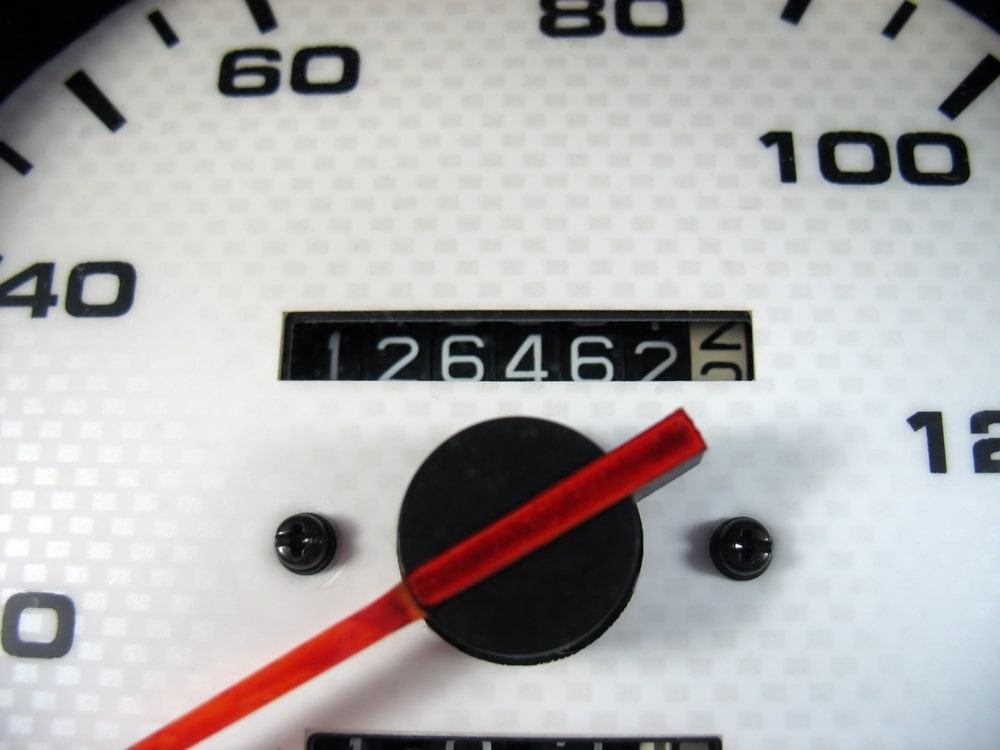In This Article
Key Points:
- Bumper-to-bumper manufacturer car warranties expire between 3 years/36,000 miles and 5 years/60,000 miles depending on the brand.
- Use your VIN to check warranty status on a manufacturer’s website or through a franchise dealer.
- Most manufacturers’ extended warranties are only available before the factory warranty expires.
So you’ve got another “final car warranty notice” letter in the mail. But is your car’s warranty really about to expire? And if it is, what should you do? Read on to learn how to find out your car warranty status and how to look for a reliable extended car warranty.
Manufacturer Car Warranty Expiration Explained
All cars come with a manufacturer’s warranty. But it doesn’t last forever. Manufacturer warranties expire at a certain odometer mileage or number of years since the original purchase date (also called the in-service date).
Many brands like Toyota, Ford, and Honda offer bumper-to-bumper terms of 3 years or 36,000 miles. Powertrain warranties last longer, like 5 years or 60,000 miles. Warranties expire once either of these limits is met.
What Is a Factory Warranty on a Car?
A factory warranty covers defects in materials and workmanship. Think of issues like your air conditioner suddenly blowing hot air. A factory warranty doesn’t cover things like routine maintenance or parts that wear out naturally, like brake pads.
Vehicles automatically include factory warranties for free. Manufacturer warranties also last for their full lengths, regardless of how many times the car has been resold.
But in reality, a factory warranty is made of multiple parts. Bumper-to-bumper and powertrain warranties are the most important, though there are also other coverages. Let’s break it down.
Bumper-to-Bumper Coverage Details
When most people think of a factory or manufacturer’s warranty, they’re thinking of bumper-to-bumper coverage. This type of warranty covers almost any component between the front and rear bumpers, like electronics, AC, infotainment, and the engine. Brands normally call this the New Vehicle Limited Warranty or Basic Limited Warranty.
Bumper-to-bumper warranties cover so many parts that it’s easier to list what they don’t cover. So, you’ll see a list of exclusions on the paperwork. Anything that isn’t excluded is covered.
Some common bumper-to-bumper exclusions are:
- Accident or environmental damage
- Cosmetic issues with glass, paint, or trim
- Certain emissions components
- Regular maintenance services and parts
When you hear people talking about manufacturer car warranty expirations, in most cases, they’re talking about the bumper-to-bumper warranty expiring.
Powertrain Warranty Coverage Details
New cars also come with powertrain warranties. These cover the parts that make your car move, like the engine, transmission, and drive axle. Companies usually offer longer powertrain warranties than bumper-to-bumper warranties.
Hyundai, Kia, Mitsubishi, and Genesis offer the longest powertrain warranties that cover up to 10 years or 100,000 miles. Other brands offer shorter coverage, and some include powertrain coverage within the bumper-to-bumper term.
So, it’s possible your bumper-to-bumper manufacturer’s warranty has expired, but you still have powertrain coverage.
Rust and Emissions Coverage
How To Check Your Car Warranty by VIN
Your car might have some of its bumper-to-bumper or powertrain warranty left, even if you bought it used. The vehicle identification number (VIN) is key to knowing exactly the coverage you have.
Manufacturer Online Portals
The best option for accurate information is to use your manufacturer’s online owner’s portal. You can find this on the main site for any major manufacturer. You’ll set up an account with the car’s VIN, and then you can see exactly how much warranty coverage remains.
For the most accurate and up-to-date information, check directly with your car’s manufacturer. Most automakers, including Ford, Toyota, Honda, and Chevrolet, have online portals where you can enter your VIN to verify warranty coverage.
Dealership Records
Carfax Warranty Check
A Carfax vehicle history report includes an estimate of the car’s remaining warranty coverage. You can buy a report with the VIN to see this information, plus other details like title brands, accident history, accident severity, previous owners, recall status, repair records, and more. It’s a great resource when you’re buying a car.
However, the warranty term estimate might not be 100% accurate. Some things can void a warranty, like tampering with the odometer. It’s rare, but Carfax might not know about these issues. Also, some warranties shorten for secondary owners, and Carfax doesn’t report this. Overall, the manufacturer and dealer should be your first points of contact for finding out if a manufacturer’s warranty has expired.
Free Warranty Check by VIN Tools
Our Top Pick
After reviewing 20 extended car warranty companies, we’ve determined that Endurance is our preferred option.
- Unlimited Miles for Cars Under 20 Years
- Maintenance Coverage Available
- Salvage or Rebuilt Cars Are Covered
- 24/7 Roadside Assistance
- Direct Administrator of Claims
Car Manufacturer Warranty List
Knowing warranty coverage can be useful when you’re shopping for a recent model year used car or simply wondering what your current vehicle has. Check out the table below for standard bumper-to-bumper and powertrain warranty terms for 2025 models. For the most part, these warranty terms have stayed the same over the past few years.
Also, keep in mind that a warranty begins at the in-service date. For a 2025 vehicle, that could be anywhere from the fall of 2024 to the winter of 2026. That’s why consulting the manufacturer or dealer is important.
| Manufacturer | Bumper-to-Bumper Warranty Term | Powertrain Warranty Term |
|---|---|---|
| Genesis | 5 years/60,000 miles | 10 years/100,000 miles |
| Hyundai | 5 years/60,000 miles | 10 years/100,000 miles |
| Kia | 5 years/60,000 miles | 10 years/100,000 miles |
| Mitsubishi | 5 years/60,000 miles | 10 years/100,000 miles |
| Jaguar | 5 years/60,000 miles | 5 years/60,000 miles |
| Ineos | 5 years/60,000 miles | |
| Rivian | 4 years/50,000 miles or 5 years/60,000 miles (Gen 1 quad-motor) | 8 years/120,000 to 150,000 miles (battery/drive unit, depends on configuration) |
| Tesla | 4 years/50,000 miles | 8 years/100,000 to 150,000 miles (battery/drive unit, depends on model) |
| Lucid | 4 years/50,000 miles | 8 years/100,000 miles (battery/drive unit) |
| Polestar | 4 years/50,000 miles | 8 years/100,000 miles (battery/drive unit) |
| Infiniti | 4 years/60,000 miles | 6 years/70,000 miles |
| Acura | 4 years/50,000 miles | 6 years/70,000 miles |
| Cadillac | 4 years/50,000 miles | 6 years/70,000 miles |
| Lexus | 4 years/50,000 miles | 6 years/70,000 miles |
| Lincoln | 4 years/50,000 miles | 6 years/70,000 miles |
| Alfa Romeo | 4 years/50,000 miles | 4 years/50,000 miles |
| Audi | 4 years/50,000 miles | 4 years/50,000 miles |
| BMW | 4 years/50,000 miles | 4 years/50,000 miles |
| Fiat | 4 years/50,000 miles | 4 years/50,000 miles |
| Land Rover | 4 years/50,000 miles | 4 years/50,000 miles |
| Mercedes-Benz | 4 years/50,000 miles | 4 years/50,000 miles |
| MINI | 4 years/50,000 miles | 4 years/50,000 miles |
| Porsche | 4 years/50,000 miles | 4 years/50,000 miles |
| Volkswagen | 4 years/50,000 miles | 4 years/50,000 miles |
| Volvo | 4 years/50,000 miles | 4 years/50,000 miles |
| Ram | 3 years/36,000 miles | 5 years/60,000 miles (5 years/100,000 miles for diesel) |
| Buick | 3 years/36,000 miles | 5 years/60,000 miles |
| Chevrolet | 3 years/36,000 miles | 5 years/60,000 miles |
| Chrysler | 3 years/36,000 miles | 5 years/60,000 miles |
| Dodge | 3 years/36,000 miles | 5 years/60,000 miles |
| Ford | 3 years/36,000 miles | 5 years/60,000 miles |
| GMC | 3 years/36,000 miles | 5 years/60,000 miles |
| Honda | 3 years/36,000 miles | 5 years/60,000 miles |
| Jeep | 3 years/36,000 miles | 5 years/60,000 miles |
| Mazda | 3 years/36,000 miles | 5 years/60,000 miles |
| Nissan | 3 years/36,000 miles | 5 years/60,000 miles |
| Subaru | 3 years/36,000 miles | 5 years/60,000 miles |
| Toyota | 3 years/36,000 miles | 5 years/60,000 miles |
Hybrid and EV Warranties
Brands usually offer different warranties for hybrid or fully-electric drive systems and batteries. The industry standard term is 8 years/100,000 miles, but some companies offer longer coverage. Also, you can get longer coverage if you live in a state like California, which requires Transitional Zero Emission Vehicles (TZEVs) to have 10 years/150,000 miles of coverage.
What a Final Warranty Notice or Motor Vehicle Services Notice Means
Why Would You Receive Motor Vehicle Services Notices?
The DMV or BMV in your state might send you a notice in the mail for the following reasons:
- Your registration is expiring
- Your license needs to be renewed
- You have to do emissions testing
But the DMV has nothing to do with your car’s warranty. You should clearly see the return address information for the DMV if it’s a legitimate letter. If not, feel free to ignore it.
How To Tell If a Final Notice Car Warranty Letter Is Legitimate
Letters from warranty companies may say “final notice on your car warranty.” They’ll look official at first glance. The letters might reference the manufacturer’s service department or warranty department, too. But these are simply marketing messages.
If you have a Chevy, a Chevy dealer isn’t going to send you a letter about your warranty expiring. They’d rather get you to trade in or buy a new car.
Other warranty companies simply calculate estimated warranty lengths and use owner registration information to send advertising that looks official. Watch out for warranty scams using these tactics, too.
Do Used Cars Come With Warranties?
Used cars might have manufacturer warranties because the warranty stays with the vehicle. Nearly all warranties are fully transferable to other owners for free.
Used car dealers must display warranty information on the buyer’s guide, so you’ll see it when shopping around. Private party sellers don’t have to do that, but a private sale doesn’t change the warranty status. Just call a franchise dealership and give them your VIN to double-check.
Some Warranties Get Downgraded
Used Car Dealer Warranties
What Voids a Car Warranty?
Only a few things truly void a car warranty. This includes tampering with the odometer and having a salvage title. A manufacturer can also deny claims for specific parts if you’ve abused the vehicle. For instance, you won’t get your suspension covered if you mess it up off-roading.
What To Check Before Your Warranty Expires
If your factory warranty is about to expire, it can be a good idea to take your car to the dealer for an inspection. Have them inspect the powertrain, electronics, air conditioning, brakes, suspension, and seals and gaskets to see if there are any issues. They’ll do a diagnostic scan to check for trouble codes, as well. Be aware that you might have to pay a diagnostic or inspection fee if there’s nothing to fix under warranty.
Your Extended Warranty Options
Say your coverage really is ending soon, should you get it extended? If your car model is prone to repairs, there’s a good chance an extended warranty could step in and cover some of the cost.
You can find coverage from manufacturers, dealers, and third-party providers. Plans vary quite a bit in what they cover, how much they cost, and what they exclude. So, get quotes from reputable providers and read the fine print before buying a plan.
Can You Get an Extended Warranty After the Factory Warranty Expires?
Most manufacturers only sell you an extended warranty before your factory bumper-to-bumper warranty expires. Some companies will only sell extended warranties on the original vehicle purchase date. So, you’d have to decide whether you want coverage the day you buy the car.
A few companies sell plans after the factory warranty expires, but this isn’t the norm. So if your car has over 100k miles or the factory warranty has already expired, a third-party plan might be your best bet.
Manufacturer Extended Warranty vs. Third-Party Vehicle Service Contracts
| Manufacturer | Third-Party VSC | |
|---|---|---|
| Plan levels | Usually 1 to 3 | Usually 3 to 6 |
| Repair network | Dealership locations only | Licensed shops, including dealers |
| Purchase window | Before the factory warranty expires | Any time |
| How to buy | Upfront payment or finance into auto loan | Upfront payment or monthly installments |
| Maximum mileage | Usually 80,000 to 100,000 | Usually 200,000+ |
| Added benefits | Roadside assistance, rental car coverage, and trip interruption | Roadside assistance, rental car coverage, and trip interruption, plus more depending on company |
Endurance Is Our Pick
After comparing 20 popular third-party providers, we rate Endurance 4.8 out of 5.0 overall and recommend it as a reliable option. The company offers six plans and unlimited mileage for vehicles up to 20 years old. Some of its plans can cover maintenance services, which an extended warranty doesn’t normally include. Get a quote if you’re looking for coverage beyond the factory warranty.
Our Top Pick
After reviewing 20 companies, we’ve determined that Endurance is our preferred option for extended car warranties.
- Unlimited Miles for Cars Under 20 Years
- Maintenance Coverage Available
- Salvage or Rebuilt Cars Are Covered
- 24/7 Roadside Assistance
- Direct Administrator of Claims
Bottom Line on Manufacturer Car Warranty Expiration
All cars come with a manufacturer’s warranty, but no warranty lasts forever. The only way to be 100% sure of when your coverage expires is to contact the manufacturer or a franchise dealership. If you want coverage beyond the expiration date, consider quotes from a few companies and read the contract to understand what is and isn’t covered.
Factory Warranty Expiration FAQs
How We Rank Extended Warranty Providers
We take a methodical approach to rating warranty companies. Here’s what that includes:
- Coverage: We consider things like the number of plans, mileage limit, maintenance coverage options, and added benefits to score companies in this area.
- Cost and buying experience: We get quotes from providers and pay attention to the experience with customer service. We also consider a company’s transparency during the buying process through sample contracts and clear coverage descriptions.
- Reputation: This category includes a company’s longevity plus its rating on the BBB and whether or not it has BBB accreditation.
- Customer service: To rate customer service, we look at BBB customer ratings plus Trustpilot scores. We also note whether the company is a direct warranty provider.

Brogan Woodburn
Advertiser Disclosure: Consumer Review Center might earn compensation from the companies featured on this page. This compensation could affect the placement, order, and visibility of products, but it does not affect the recommendations made by the editorial team. Not every company, product, or offer has been reviewed.
Related Resources

Is a Dealership Warranty on a Used Car Worth It?
A dealership warranty for a used car can cover mechanical repairs on pre-owned vehicles for a certain period of time and miles, but is it worth it?

How to Know If Your Car Is Under Warranty. Did Your Factory Warranty Expire?
Determine if your car is covered by original manufacturer’s warranty.

Is a Toyota Car Warranty Extension Worth It?
In This Article Advertiser DisclosureYou can extend your Toyota car warranty with a Vehicle Service Agreement to cover breakdowns, but does your long-lasting Toyota need









